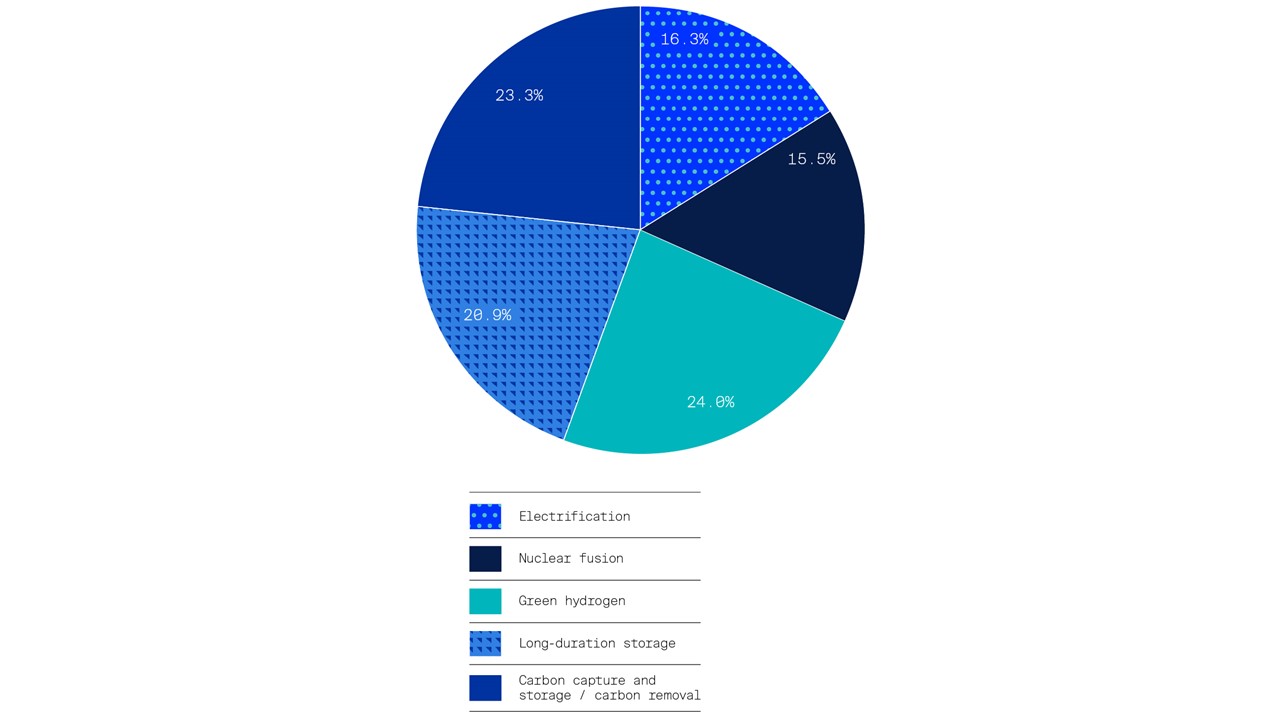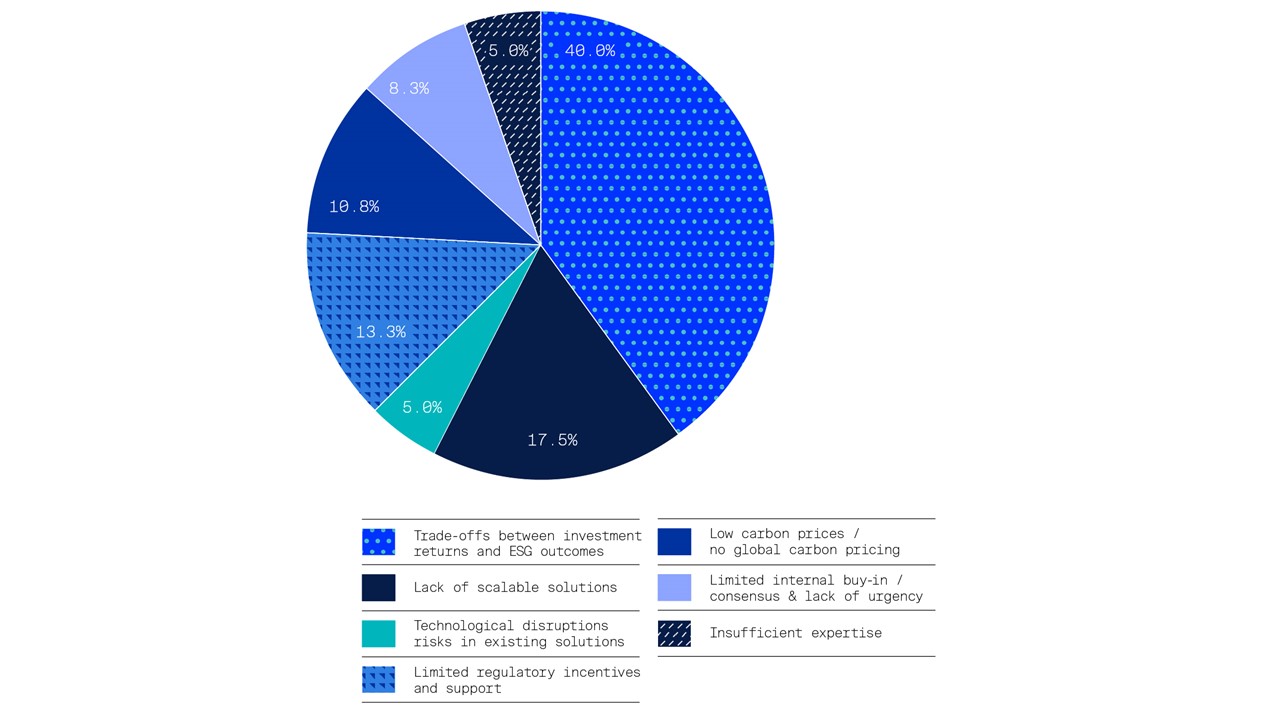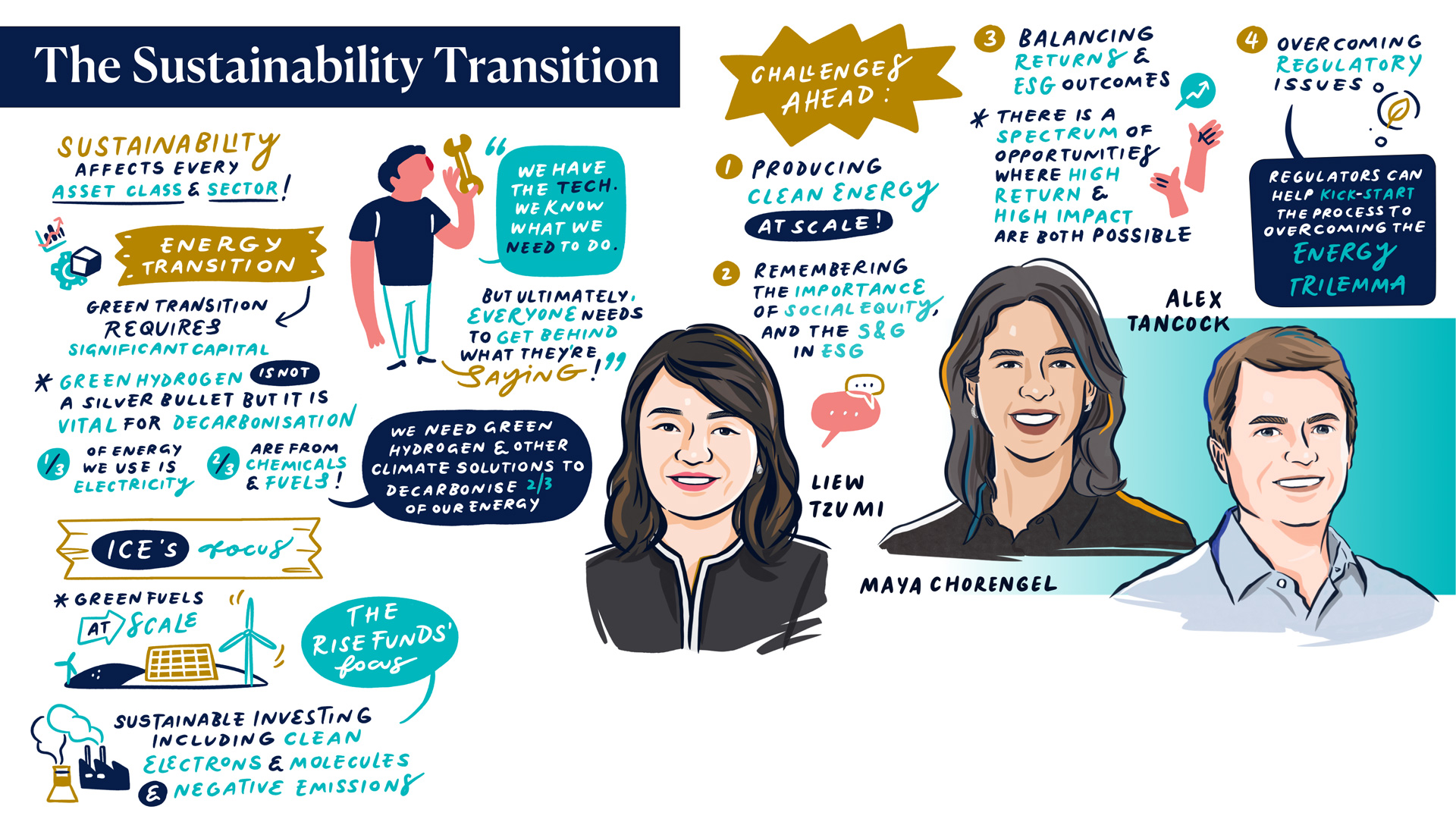This article presents the key takeaways from a panel discussion featuring Alexander Tancock, CEO of InterContinental Energy and Maya Chorengel, Co-Managing Partner of The Rise Funds, TPG, at GIC Insights 2022, which took place on 15 November 2022 in Singapore.
Moderated by Liew Tzu Mi, Chief Investment Officer of Fixed Income and Chair of the Sustainability Committee at GIC, the panellists discussed the key challenges faced in climate investing and the global transition to a net-zero economy, the role of regulators, and the importance of both climate adaptation and mitigation as well as focusing on both environmental and social impact.
We have the technology. We know what we need to do. (But) ultimately, (everyone) needs to get behind what they’re saying.
The need for deep knowledge and large capital
In November 2022, United Nations Secretary General Antonio Guterres kicked off COP27 with a powerful warning: “humanity has a choice — cooperate or perish”. Certainly, the window for taking decisive action on climate change and sustainability is closing rapidly. As a result, the last few years have seen a significant increase in the amount of capital flowing into climate solutions and subsequently, an increase in the number of climate-related opportunities available.
The panel shared that such a vast range of opportunities requires investors to gain a deep understanding of different sectors and technologies. This is to identify not just what is impactful, but what is investable and when the best time to invest is.
In terms of where the best opportunities are, the audience identified green hydrogen as the most promising ‘game changer’ in the energy transition, followed by carbon capture and storage, carbon removal, and long-duration storage.
Which of the following is the most promising and scalable game changer for the energy transition?

Source: GIC Insights audience poll
Elaborating on the potential of green hydrogen, the speakers noted that while it is not the only solution to decarbonising the energy sector, it is a vital part of the equation. They added that green hydrogen is simple and sustainable, making it an ideal replacement for fossil fuels and chemicals which make up about two-thirds of global energy consumption. The challenge is being able to produce clean energy at a large enough scale which will require substantial capital. According to the Energy Transitions Commission, decarbonising energy and other industries globally will require nearly US$15 trillion in investment from now till 2050.
Climate adaptation remains important
While climate mitigation solutions such as green hydrogen are important, the panel also drew attention to the need for climate adaptation to help the world cope with the devastating physical effects of the climate crisis, such as rising temperatures and increasingly frequent natural disasters.
One example is Climavision, a weather tech start-up that uses data and artificial intelligence to predict weather patterns. The solution is used by logistics companies, government agencies, and even hedge funds. For example, it may help a logistics firm understand how best to reroute their services in case of weather extremes, or a government body to identify the most vulnerable areas with an immediate need for aid.
Balancing ESG and returns, solving the energy trilemma, and the role of regulators
The panel discussed a few critical challenges presented by the sustainability transition, including balancing ESG outcomes and investment returns, and solving the “energy trilemma”.
What is the single biggest challenge that you need to overcome in order to invest more in sustainability?

Source: GIC Insights audience poll
The trade-off between “doing well” versus “doing good” was likewise identified by the audience as a key obstacle to drawing in more capital. The speakers shared that while it may not apply to every sector, certain opportunities could offer both high returns and high impact. They added that for more of these investments to be made possible, governments must introduce more incentives to help offset certain risks that investors are not yet willing to bear. This will help unlock a greater flow of capital to fund important technologies and help them achieve scale.
Examples of such incentives include the United States’ Inflation Reduction Act and the European Union’s REPowerEU Plan, which will invest around US$370 billion and around €300 billion in energy security and climate change, respectively.
The panel also discussed the “energy trilemma”, which refers to the challenge of achieving sustainability, cost efficiency, and energy security all at the same time. They shared that energy security especially has become increasingly important given recent geopolitical tensions, adding that investors will likely bring energy back to the fore in the years ahead. Resolving the trilemma will require greater regulatory support, such as increased carbon taxes, but the onus is also on markets to play a more significant role.
Bringing back the focus on social equity
The panel reflected that given the magnitude of climate issues, a lot of attention is placed on the environment and as a result, social equity can sometimes be overlooked, particularly in emerging markets. They added that the ‘E’ and ‘S’ in ESG are closely linked and highlighted the importance of climate justice given that the effects of climate change are most deeply felt by lower-income communities.
One of the panellists provided an overview of potential metrics to measure social impact, such as looking at the benefits of providing people with improved access to finance, education, healthcare, and more, in the same way we would quantify the reduction of carbon emissions. Robust impact measurement will enable investors to place a greater focus on social investing.
The panel also shared that often, paying attention to the ‘S’ in ESG can have a positive impact on a company’s business operations and bottom line. For example, when InterContinental Energy identified the potential for a large-scale green hydrogen project on the traditional lands of the Mirning Nation in Western Australia, they first established a groundbreaking partnership with the Mirning involving carried equity, a permanent board seat, and other benefits. By incorporating ‘S’ considerations upfront, innumerable benefits have already been seen, which are leading to a larger and better project.
In sum, the panellists concluded that achieving a net-zero economy while also advancing social equity and enabling a just transition is possible, but ultimately requires greater action from everyone from consumers to businesses to government bodies.







